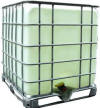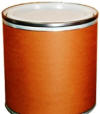|
Mubychem Group, is a mature manufacturing company since generations. Engaged in manufacture and supply of Pharmaceutical Intermediates and Excipients, Oil field & fracturing chemicals, Specialty tailor made grades of chemicals in India. With several manufacturing facilities in India and world wide contacts and toll manufacturers we are exporting to all the countries in the world.. |
The company and associated units have certificates & accreditations like FDA - GMP approval; ISO-9001 Certified; "REACH" Registered; ISO-22000; Kosher Certified; Halal Certified; HACCP. We offer Commercial Pure & Pharmacopoeia IP BP USP FCC Food Grade ACS AR Analytical Reagent Grades of Chemicals |
|
TBHQ Tert Tertiary Butylhydroquinone Manufacturers
TBHQ Tert or Tertiary Butylhydroquinone Manufacturers, SDS MSDS Sheet
Apart from Tertiary or Tert Butylhydroquinone we also manufacture Butylated hydroxyanisole and Butylated hydroxytoluene, the main antioxidants for oils and fats.
TBHQ, Tertiary Butyl Hydroquinone, Tert Butylhydroquinone, SDS GHS, MSDS Sheet, Material Safety Data Sheet
1. Product Identification
Synonyms: 2 tert-butyl-1,4 –dihydroxy benzene; TBHQ; Tertiary or Tert Butyl Hydroquinone; Tert Butylhydroquinone
CAS No.: 1948-33-0
EINECS EC Number: 217-752-2
Molecular Weight: 166.22
Chemical Formula: C10H14O2
2. Hazards Identification
GHS, Globally Harmonized System Classification in accordance with 29 CFR 1910
Classification according to Regulation (EC) No 1272/2008
Acute toxicity, Oral Category 4
Skin corrosion/irritation Category 2
Skin Sensitization Category 1
Serious eye damage/eye irritation Category 2A
Specific target organ toxicity, single exposure; Respiratory tract irritation Category 3
Labelling according Regulation (EC) No 1272/2008
GHS Label Elements  Irritant |
Signal Words: Warning
Hazard statements:
H302 Harmful if swallowed.
H315: Causes skin irritation.
H317: May cause an allergic skin reaction.
H319 Causes serious eye irritation.
H335: May cause respiratory irritation.
Precautionary statements:
P262: Do not get in eyes, on skin, or on clothing.
P264 Wash skin thoroughly after handling.
P270 Do not eat, drink or smoke when using this product.
P273 Avoid release to the environment.
P280: Wear protective gloves/protective clothing/eye protection/face protection.
P314: Get Medical advice/attention if you feel unwell.
P330: Rinse mouth.
P301+312: IF SWALLOWED: Call a POISON CENTER or doctor/physician if you feel unwell.
P302+352: IF ON SKIN: Wash with soap and water.
P332+313: If skin irritation occurs: Get medical advice/attention.
P305+ P351 + P338 IF IN EYES: Rinse cautiously with water for several minutes. Remove contact lenses, if present and easy to do. Continue rinsing.
P337+P313 If eye irritation persists: Get medical advice/ attention.
P360: Rinse immediately contaminated clothing and skin with plenty of water before removing clothes.
P362: Take off contaminated clothing and wash before reuse.
P501 Dispose of contents/ container to an approved waste disposal plant.
Classification according to EU Directive 67/548/EEC and 1999/45/EC:
Xn Harmful
Xi Irritant
N Dangerous for the environment
R50 Very toxic to aquatic organisms
R22 Harmful if swallowed,
R36/37/38 Irritating to eyes, respiratory system and skin.
For the full text of the H-Statements and R-phrases mentioned in this Section, see Section 16.
3. Composition/Information on Ingredients
Ingredient: TBHQ Tertiary or Tert Butyl Hydroquinone also called Tert Butylhydroquinone
CAS No.: 1948-33-0
EINECS EC Number: 217-752-2
Percent: 97 - 100%
4. First Aid Measures
Always seek medical attention after first aid measures are provided.
Inhalation: Remove to fresh air. If not breathing, give artificial respiration. If breathing is difficult, give oxygen. Get medical attention.
Ingestion: Never give anything by mouth to an unconscious person. Get medical attention.
Skin Contact: Wipe off excess material from skin then immediately flush skin with plenty of water for at least 15 minutes. Remove contaminated clothing and shoes. Get medical attention. Wash clothing before reuse. Thoroughly clean shoes before reuse.
Eye Contact: Immediately flush eyes with plenty of water for at least 15 minutes, lifting lower and upper eyelids occasionally. Get medical attention immediately.
5. Fire Fighting Measures
Flammability of the Product: May be combustible at high temperature..
Auto-Ignition Temperature: 470C (878F).
Flash Points: 171 deg C ( 339.80 deg F)
Products of Combustion: Carbon dioxide, Carbon monoxide, fumes.
Explosion: Slightly explosive in presence of heat.
Fire Extinguishing Media: Use any means suitable for extinguishing surrounding fire. Use water spray, alcohol-resistant foam, dry chemical or carbon dioxide.
Special Information: In the event of a fire, wear full protective clothing and NIOSH-approved self-contained breathing apparatus with full face piece operated in the pressure demand or other positive pressure mode. At high temperatures or when moistened under fire conditions, it may produce toxic or irritating fumes. On decomposition it may emit hydrogen chloride. Containers may explode on heating
6. Accidental Release Measures
Small Spill: Avoid dust formation. Avoid breathing dust. Ensure adequate ventilation. Use appropriate tools to put the spilled solid in a convenient waste disposal container. Finish cleaning by spreading water on the contaminated surface and dispose of according to local and regional authority requirements.
Large Spill: Avoid touching the spilled material. Do not let the product enter drains. Use a shovel to put the material into a convenient waste disposal container. Do not contaminate the environment.
7. Handling and Storage
Do not ingest. Do not breathe dust. Wear suitable protective clothing. In case of insufficient ventilation, wear suitable respiratory equipment.
Avoid contact with skin and eyes. Avoid formation of dust and aerosols. Wash hands thoroughly after handling. Provide appropriate exhaust ventilation at places where dust is formed. If you feel unwell, seek medical attention.
Keep in a tightly closed container, stored in a cool, dry, ventilated area. Protect against physical damage.
8. Exposure Controls/Personal Protection
Airborne Exposure Limits: Not Established.
Ventilation System: A system of local and/or general exhaust is recommended to keep employee exposures as low as possible. Local exhaust ventilation is generally preferred because it can control the emissions of the contaminant at its source, preventing dispersion of it into the general work area.
Personal Respirators (NIOSH Approved): For conditions of use where exposure to dust or mist is apparent and engineering controls are not feasible, a particulate respirator may be worn. For emergencies or instances where the exposure levels are not known, use a full-face positive-pressure, air-supplied respirator.
Skin Protection: Wear protective gloves and clean body-covering clothing.
Eye Protection: Use chemical safety goggles and/or full face shield where dusting or splashing of solutions is possible. Maintain eye wash fountain and quick-drench facilities in work area.
Other Control Measures: Maintain good housekeeping in work area. Handle in accordance with good industrial hygiene and safety practice. Wash hands after handling.
9. Physical and Chemical Properties
Appearance: White crystalline solid.
Odor: It has faint odor.
Solubility: It is slightly soluble in water.
pH: NA
Density: 1.05 g/mL at 20C (68F)
Molecular Weight: 166.22
Molecular Formula: C10H14O2
Boiling Point: Decomposes (It is variously reported)
Melting Point: 127°C (260.6°F)
10. Stability and Reactivity
Stability: It is stable under ordinary conditions of use and storage.
Hazardous Decomposition Products: It emits Carbon dioxide, Carbon monoxide & Fumes.
Hazardous Polymerization: Will not occur.
Incompatibilities: Strong oxidizing agents, reducing agents, heat, metals and acids bases.
Conditions to Avoid: Incompatibles and moisture.
11. Toxicological Information
Harmful if inhaled or swallowed. Irritating to skin.
Toxicity data
ORAL-RAT LD50 700 mg kg-1
PRO-AM LD50 790 mg kg-1
Carcinogenic Effects: Not know as carcinogen.
Mutagenic Effects: Mutagenic effects have occurred in experimental animals.
Teratogenic Effects: Teratogenic effects have occurred in experimental animals.
12. Ecological Information
Environmental Fate: Not available.
Environmental Toxicity: Not known. Toxicity to fish is expected.
Products of Biodegradation: Possibly hazardous short term degradation products are not likely. However, long term degradation products may arise.
13. Disposal Considerations
Whatever cannot be saved for recovery or recycling should be managed in an appropriate and approved waste disposal facility. Processing, use or contamination of this product may change the waste management options. State and local disposal regulations may differ from federal disposal regulations. Dispose of container and unused contents in accordance with federal, state and local requirements.
14. Transport Information
US DOT Classification:
UN-Number: UN 3077
Shipping Name: Environmentally Hazardous Substance, Solid, N.O.S.
CLASS 9
Packing group: III
Canada TDG Classification:
UN-Number: UN 3077
Shipping Name: Environmentally Hazardous Substance, Solid, N.O.S.
CLASS 9
Packing group: III
IATA
UN-Number: UN 3077
Shipping Name: Environmentally Hazardous Substance, Solid, N.O.S.
CLASS 9
Packing group: III
15. Regulatory Information
USA:
SARA 302 Components : No chemicals in this material are subject to the reporting requirements of SARA Title III, Section 302.
SARA 313 Components: No chemicals are reportable under Section 313.
TSCA : listed on the TSCA Inventory.
Health & Safety Reporting List: None of the chemicals are on the Health & Safety Reporting List.
Chemical Test Rules : None of the chemicals in this product are under a Chemical Test Rule.
Section 12b : None of the chemicals are listed under TSCA Section 12b.
TSCA Significant New Use Rule : None of the chemicals in this material have a SNUR under TSCA.
CERCLA Hazardous Substances and corresponding RQs : None of the chemicals in this material have an RQ.
Massachusetts Right To Know Components: Not Listed
Pennsylvania Right To Know Components: Not Listed
New Jersey Right To Know Components: Not Listed
California prop. 65: Contains no chemical subject to California Prop 65.
Canada - DSL/NDSL : CAS# 128-37-0: is listed on Canada's DSL List.
Canada - WHMIS : CLASS D2B.
Canadian Ingredient Disclosure List : CAS# 1948-33-0 is not listed on Canada's Ingredient Disclosure List.
Canadian Domestic Substance List (DSL) Inventory Listing: Listed on the DSL.
Section 16 - Additional Information
Disclaimer:
***************************
Our company provides this TBHQ Tertiary or Tert Butyl Hydroquinone also
called Tert Butylhydroquinone SDS sheet in good faith but makes no
representation as to its comprehensiveness or accuracy. This TBHQ Tertiary
or Tert Butyl Hydroquinone also called Tert Butylhydroquinone MSDS sheet is
intended only as a guide to the appropriate precautionary handling of the
material by a properly trained person using this product. The above
information has been compiled from various sources and has the possibility
of discrepancy and being out-dated information. Individuals receiving the
information must exercise their independent judgment and do further search
in determining its appropriateness for a particular purpose. In no case
shall our company be liable to loss or damages by the product user.
***************************
TBHQ Tert Tertiary Butyl Hydroxy Quinone Tertiary Butylhydroquinone Manufacturers
MUBY CHEMICALS GROUP
DONGRI-CHINCHBUNDER, MUMBAI 400009, INDIA
TEL: (OFFICE)
91-22-23770100, 91-22-23726950, 91-22-23774610, 23723564.
e-mail: info@mubychem.com









